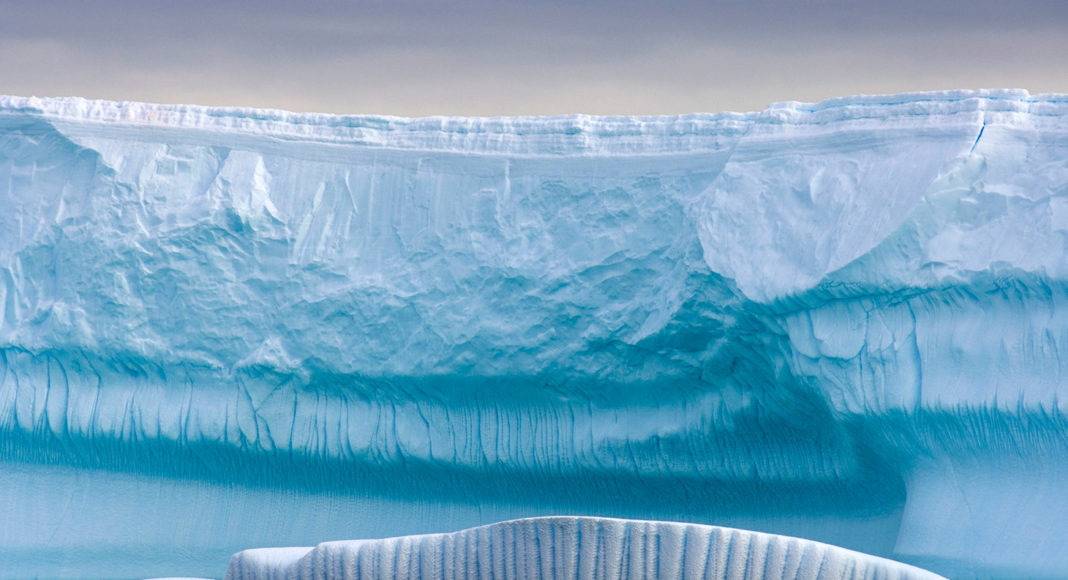LONDON, 13 December, 2014 −The Antarctic ice shelf is under threat from a silent, invisible agency – and the rate of melting of glaciers has trebled in the last two decades. The ocean waters of the deep circumpolar current that swirl around the continent have been getting measurably warmer and nearer the ocean surface over the last 40 years, and now they could be accelerating glacier flow by melting the ice from underneath, according to new research.
And a separate study reports that the melting of the West Antarctic glaciers has accelerated threefold in the last 21 years.
Calamitous consequences
If the West Antarctic ice sheet were to melt altogether – something that is not likely to happen this century – the world’s sea levels would rise by 4.8 metres, with calamitous consequences for seaboard cities and communities everywhere.
Researchers from Germany, Britain, Japan and the US report in Science journal that they base their research on long-term studies of seawater temperature and salinity sampled from the Antarctic continental shelf.
This continued intrusion of warmer waters has accelerated the melting of glaciers in West Antarctica, and there is no indication that the trend is likely to reverse.
Other parts of the continent so far are stable – but they could start melting for the first time.
 “The Antarctic ice sheet is a giant water reservoir,” said Karen Heywood, professor of environmental sciences at the University of East Anglia, UK. “The ice cap on the southern continent is on average 2,100 metres thick and contains 70% of the world’s fresh water. If this ice mass were to melt completely, it could raise global sea level by 60 metres. That is not going to happen, but it gives you an idea of how much water is stored there.”
“The Antarctic ice sheet is a giant water reservoir,” said Karen Heywood, professor of environmental sciences at the University of East Anglia, UK. “The ice cap on the southern continent is on average 2,100 metres thick and contains 70% of the world’s fresh water. If this ice mass were to melt completely, it could raise global sea level by 60 metres. That is not going to happen, but it gives you an idea of how much water is stored there.”
Temperatures in the warmest waters in the Bellinghausen Sea in West Antarctica have risen from 0.8°C in the 1970s to about 1.2°C in the last few years.
“This might not sound much, but it is a large amount of extra heat available to melt the ice,” said Sunke Schmidtko, an oceanographer at the Geomar Helmholtz Centre for Ocean Research in Kiel, Germany, who led the study. “These waters have warmed in West Antarctica over 50 years. And they are significantly shallower than 50 years ago.”
The apparent rise of warm water, and the observed melting of the West Antarctic ice shelf, could be linked to long-term changes in wind patterns in the southern ocean. Although melting has not yet been observed in other parts of the continent, there could be serious consequences for other ice shelves.
The shelf areas are where the Antarctic krill – the little shrimp that plays a vital role in the Antarctic ocean food chain – are getting warmer, with unpredictable consequences for spawning cycles, and then for ocean biodiversity.
Meanwhile, according to US scientists writing in Geophysical Research Letters, the glaciers of the Amundsen Sea in West Antarctica are shedding ice faster than any other part of the region.
Tyler Sutterley, a climate researcher at the University of California Irvine, and NASA space agency colleagues used four sets of observations to confirm the threefold acceleration.
They took their data from NASA’s Gravity Recovery and Climate Experiment (GRACE) satellites, from a NASA airborne project called Operation IceBridge, from an earlier satellite called ICESat, and from readings by the European Space Agency’s Envisat satellite.
Loss calculated
The observations spanned the period 1992 to 2013 and enabled the researchers to calculate the total loss of ice, and also the rate of change of that loss.
In all, during that period the continent lost 83 gigatonnes, or 83 billion metric tonnes, of ice per year on average. Since Mount Everest weighs an estimated 161 billion tonnes, this is as if the ice cap lost an Everest’s worth of ice every two years.
After 1992, the rate of loss accelerated by 6.1 billion tonnes a year, and between 2003 and 2009 the melt rate increased by 16.3 gigatonnes a year on average. So the increasing rate of loss is now nearly three times the original figure.
“The mass loss of these glaciers is increasing at an amazing rate,” said Isabella Velicogna, Earth system scientist at both UC Irvine and the NASA Jet Propulsion Laboratory.

